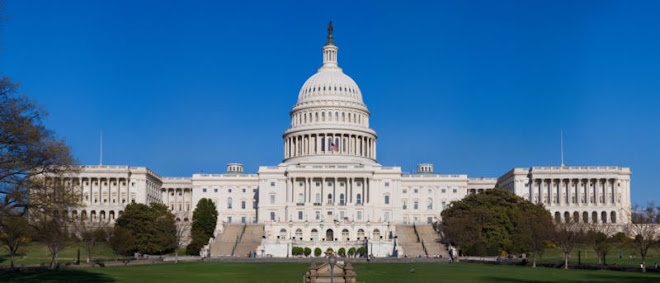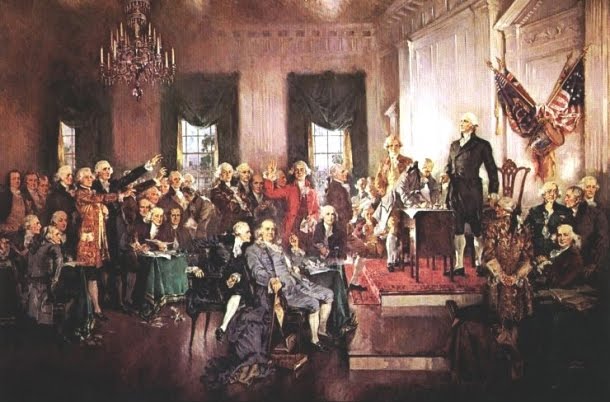From The Heritage Foundation:
Time to Make Cuts in the Department of Energy
Disco, mood rings and bell-bottom pants are relics of the 1970s relegated to the dustbin of cultural history. But one product of the 70s is still going strong and growing at a rapid rate, despite America's monstrous fiscal crisis. It's the Department of Energy (DOE), and in the last 10 years it has seen its budget grow by over $11 billion -- a staggering 76 percent. If Congress wants to cut government spending, the DOE would be a good place to start.
At a town hall meeting broadcast yesterday on Facebook, President Barack Obama spoke about some of that spending, proclaiming that his Administration made "the largest investment in history in clean energy research," while also lamenting that he has not yet reached his dream of putting 1 million electric vehicles on the road. That's with good reason. As President Obama admitted, the technology is "heavy" and "expensive." In other words, electric cars can't stand on their own two legs (or four wheels) without government support.
That's the story of President Obama's DOE. The agency has seen its mission evolve from basic research and development to spending billions to commercialize technologies that aren't yet viable -- and might never be. And other programs it undertakes are politically correct pet projects that have little business being supported by taxpayers. All that spending adds up to a lot of fat -- $6 billion worth -- that could be cut from the DOE's budget, according to The Heritage Foundation's Nicolas Loris.
Here's what some of that spending looks like. Just this week, the DOE granted a $2.1 billion loan guarantee to a German developer to help finance a 1,000 megawatt solar thermal power plant in southern California (that's on top of another $3.8 billion in loan guarantees issued since February). And yesterday it announced $130 million in funding for engineering plants, advanced thermal storage, development of rare earth metals, electricity grid technology and solar power. Loris explains that the private sector, not the government, should be making these investments:
Some argue that the DOE has a role to play in basic research—investing in ideas that can provide benefits but are too financially risky for the private sector to undertake. But just because an endeavor is too financially risky for a company to undertake does not mean it is something the government should pay for.
And there are great examples of the private sector taking those risks. Loris writes:
General Fusion, a small startup company in Vancouver, is a prime example. The funding does not come from the government but is driven by the motivation of profits—providing unlimited amounts of clean energy. General Fusion CEO Doug Richardson says, “There’s a feeling that the research has to be done by a government, that it costs billions of dollars and that 3,000 smart people can’t be wrong. People have a mindset that this can’t be done by a small company.”
Though President Obama would like to pick winners and losers in the development of energy technology, by way of the DOE, ultimately it's profits and losses that determine whether a product will survive in the marketplace. The Department of Energy certainly has a role to play in energy security and environmental management, but using taxpayer dollars to prop up industries and technologies is not its job.
Time to Make Cuts in the Department of Energy
Disco, mood rings and bell-bottom pants are relics of the 1970s relegated to the dustbin of cultural history. But one product of the 70s is still going strong and growing at a rapid rate, despite America's monstrous fiscal crisis. It's the Department of Energy (DOE), and in the last 10 years it has seen its budget grow by over $11 billion -- a staggering 76 percent. If Congress wants to cut government spending, the DOE would be a good place to start.
At a town hall meeting broadcast yesterday on Facebook, President Barack Obama spoke about some of that spending, proclaiming that his Administration made "the largest investment in history in clean energy research," while also lamenting that he has not yet reached his dream of putting 1 million electric vehicles on the road. That's with good reason. As President Obama admitted, the technology is "heavy" and "expensive." In other words, electric cars can't stand on their own two legs (or four wheels) without government support.
That's the story of President Obama's DOE. The agency has seen its mission evolve from basic research and development to spending billions to commercialize technologies that aren't yet viable -- and might never be. And other programs it undertakes are politically correct pet projects that have little business being supported by taxpayers. All that spending adds up to a lot of fat -- $6 billion worth -- that could be cut from the DOE's budget, according to The Heritage Foundation's Nicolas Loris.
Here's what some of that spending looks like. Just this week, the DOE granted a $2.1 billion loan guarantee to a German developer to help finance a 1,000 megawatt solar thermal power plant in southern California (that's on top of another $3.8 billion in loan guarantees issued since February). And yesterday it announced $130 million in funding for engineering plants, advanced thermal storage, development of rare earth metals, electricity grid technology and solar power. Loris explains that the private sector, not the government, should be making these investments:
Some argue that the DOE has a role to play in basic research—investing in ideas that can provide benefits but are too financially risky for the private sector to undertake. But just because an endeavor is too financially risky for a company to undertake does not mean it is something the government should pay for.
And there are great examples of the private sector taking those risks. Loris writes:
General Fusion, a small startup company in Vancouver, is a prime example. The funding does not come from the government but is driven by the motivation of profits—providing unlimited amounts of clean energy. General Fusion CEO Doug Richardson says, “There’s a feeling that the research has to be done by a government, that it costs billions of dollars and that 3,000 smart people can’t be wrong. People have a mindset that this can’t be done by a small company.”
Though President Obama would like to pick winners and losers in the development of energy technology, by way of the DOE, ultimately it's profits and losses that determine whether a product will survive in the marketplace. The Department of Energy certainly has a role to play in energy security and environmental management, but using taxpayer dollars to prop up industries and technologies is not its job.










No comments:
Post a Comment